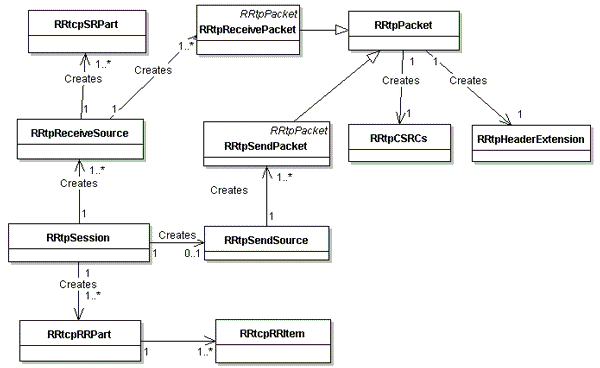RTP overview
Purpose
The Multimedia Protocols RTP (Real-Time Transport Protocol) component provides RTP communication services. This overview shows the usage of the RTP/RTCP protocol as defined in RFC 3550.
Required background
The clients that make use of this API need to be familiar with RFC 3550 standard.
Key concepts
The component has the following key concepts:
- RTP
RTP provides end-to-end network transport services for data with real-time characteristics, such as interactive audio and video. It is built on top of the User Datagram Protocol (UDP).
RTP contains two closely linked parts:
- RTCP
RTP Control Protocol used to provide feedback on the quality of service being provided by RTP. RTP and RTCP support transmission of the data and the control packets.
Architectural Relationship
The RTP component of MM-protocols uses the following:
API summary
The following are some of the main classes used for RTP communication.
| Class Name | Description |
|---|---|
A handle to an RTP session that abstracts all RTP information going to and from an RTP socket, and its corresponding RTCP data. | |
A handle to an RTP packet used to access the packet through the interface provided by this handle. | |
Derived from | |
Derived from | |
A handle to a receive stream. An object of this type represents the stream of data on a single SSRC and delivers the RTP packets and RTCP information in the order they arrive. | |
A handle to a send stream, used to manage the creation and sending of packets. |
The following diagram shows the RTP classes and their relationships.

Figure: Class diagram for RTP classes
Typical uses
Any application requiring RTP as its transport protocol should use this API. RTP provides the following key services:
The RTP API allows you to perform the following tasks:
Note: Before using any of these services, a connection to the socket server must have been made and the socket must be open.